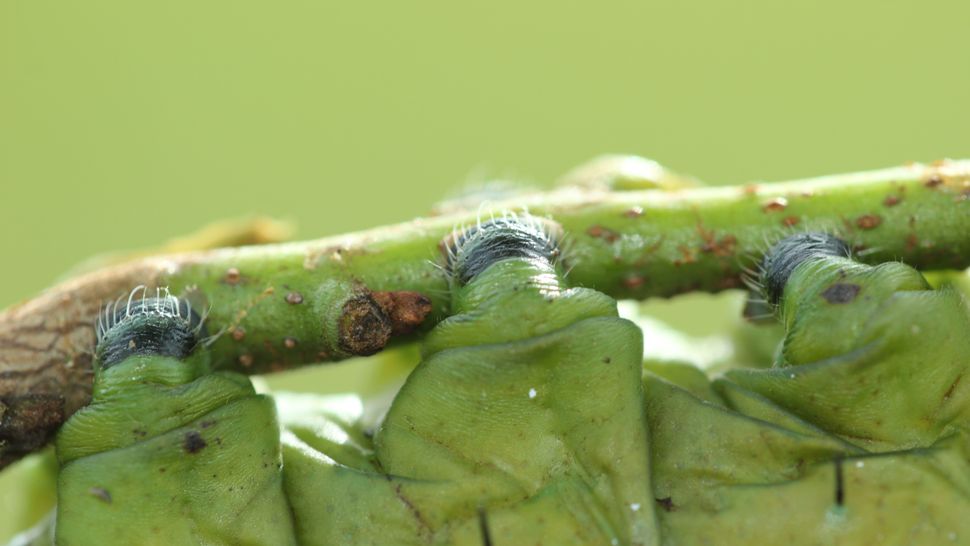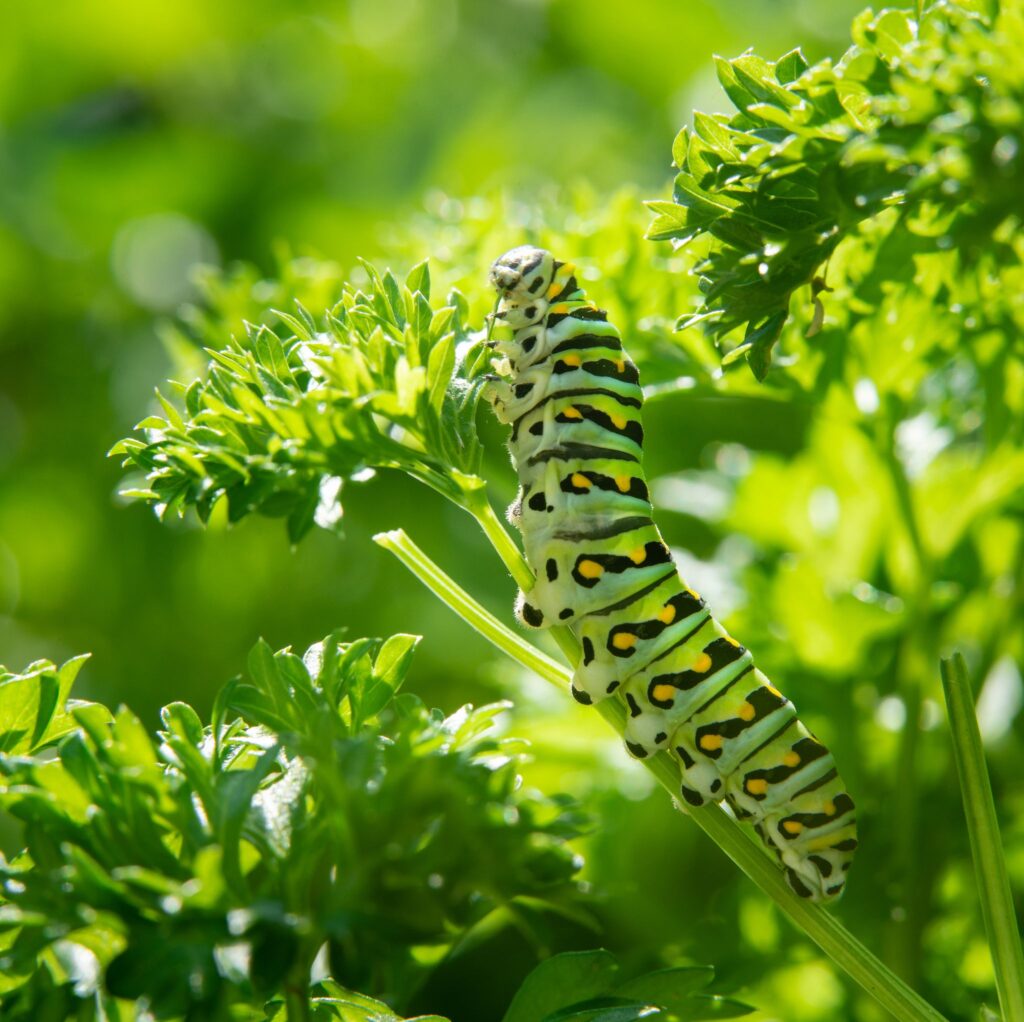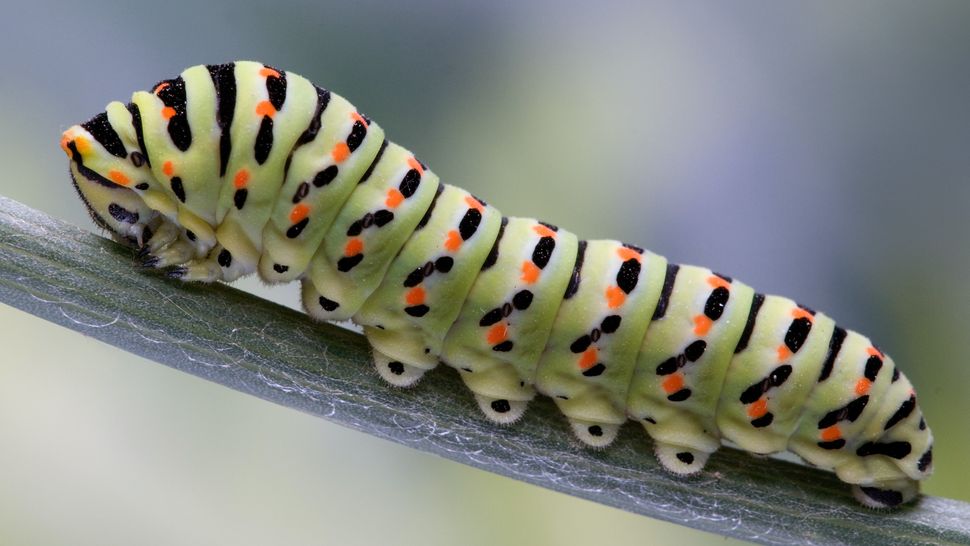The additional legs caterpillars possess trace their origins back to the primitive crustaceans that insects evolved from during the Ordovician period over 400 million years ago.
Scientists have unraveled the mystery of caterpillars’ extra legs, known as prolegs. These limbs, distinct from the typical six legs of insects, are now believed to have originated from primitive crustaceans during the Ordovician period over 400 million years ago.
The prolegs, unjointed and equipped with gripping hooks, are crucial for caterpillars’ movement and are mainly powered by hydraulic pressure. This discovery sheds light on the evolutionary history of these unique structures, emphasizing their connection to crustacean ancestors.
The study, published in Science Advances, provides valuable insights into the adaptation of insects over millions of years.

Caterpillars, the larval stage of butterflies and moths, possess a distinctive feature known as prolegs—additional sets of limbs that facilitate gripping substrates. Unlike the six jointed legs that most insects have, prolegs are unjointed and equipped with sets of gripping hooks that function like spiky suction cups. The movement of prolegs is primarily powered by hydraulic pressure, which involves the movement of liquid into each limb. Prolegs, emerging from the abdomen rather than the thorax, play a crucial role in aiding caterpillars in feeding and moving along substrates.
A recent study, published in Science Advances on October 12, explores the origins of prolegs, shedding light on their evolutionary history. The research suggests that prolegs have their roots in the primitive crustaceans from which insects evolved during the Ordovician period, spanning from 485.4 million to 443.8 million years ago. Prolegs, marked by their gripping hooks, typically number as many as nine pairs, emerging from the abdomen and supporting the caterpillar’s gut-based body plan.
Antonia Monteiro, an evolutionary biologist at the National University of Singapore (NUS) and co-author of the study, explained that caterpillars maximize their eating and growth potential by evolving a gut-based body plan with a few legs to support the gut. The prolegs, being crucial in this process, disappear during metamorphosis when the caterpillar transforms into an adult insect.
Scientists have previously debated the origin of prolegs, proposing various hypotheses. Some suggested a connection to thoracic legs, positing them as extra sets that disappeared over insect evolution and were reactivated when needed. Others considered prolegs as entirely novel adaptations. A third hypothesis proposed that prolegs might be modified endites, internally facing leg structures apparent in ancestral crustaceans.
The recent study aimed to unravel these mysteries by altering the embryonic development of squinting bush brown butterflies (Bicyclus anynana) and observing the resultant growth of prolegs. By disrupting a gene that dictates limb placement during the embryonic stage, researchers were able to discern the developmental pathways of prolegs. The experiments revealed that prolegs do not develop from the same cell types as thoracic legs but appear to be modified endites. As crustaceans evolved into insects, the gene associated with endites was reactivated in butterflies and moths, providing caterpillars with prolegs.
Understanding the evolutionary origin of prolegs adds another layer to our comprehension of the intricate adaptations in the insect world. The study not only unravels the mystery surrounding these peculiar appendages but also highlights the complex and fascinating journey of evolutionary changes that have shaped the diverse forms of life on Earth.

The study on the origins of caterpillar prolegs has not only provided insights into these unique structures but has also unveiled intriguing connections to other insect adaptations. Beyond prolegs, the only other persistent appearance of endites in insects is observed in the mouthparts, including mandibles, maxillae, and labium. Remarkably, these mouthparts are themselves modified legs, with the cutting edge of the mandible appearing as a highly modified endite.
Antonia Monteiro, the co-author of the study, highlighted the shared genetic expressions between prolegs and head appendages, indicating commonalities in their evolutionary history. The findings suggest that structures originating from the crustacean ancestors of insects have undergone multiple evolutionary repurposings, serving diverse functions. In this context, prolegs have been adapted to aid very hungry caterpillars in both movement and feeding, showcasing the intricate and versatile nature of evolutionary adaptations in the insect world. The study not only unravels the mystery of prolegs but also emphasizes the complex web of evolutionary changes that contribute to the remarkable diversity of insect morphology.
